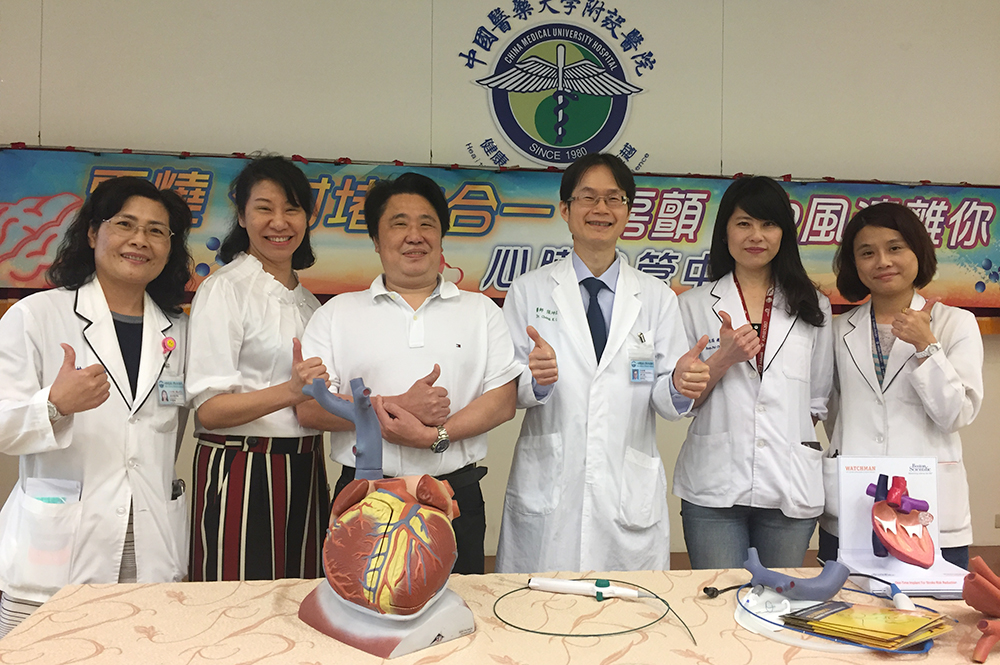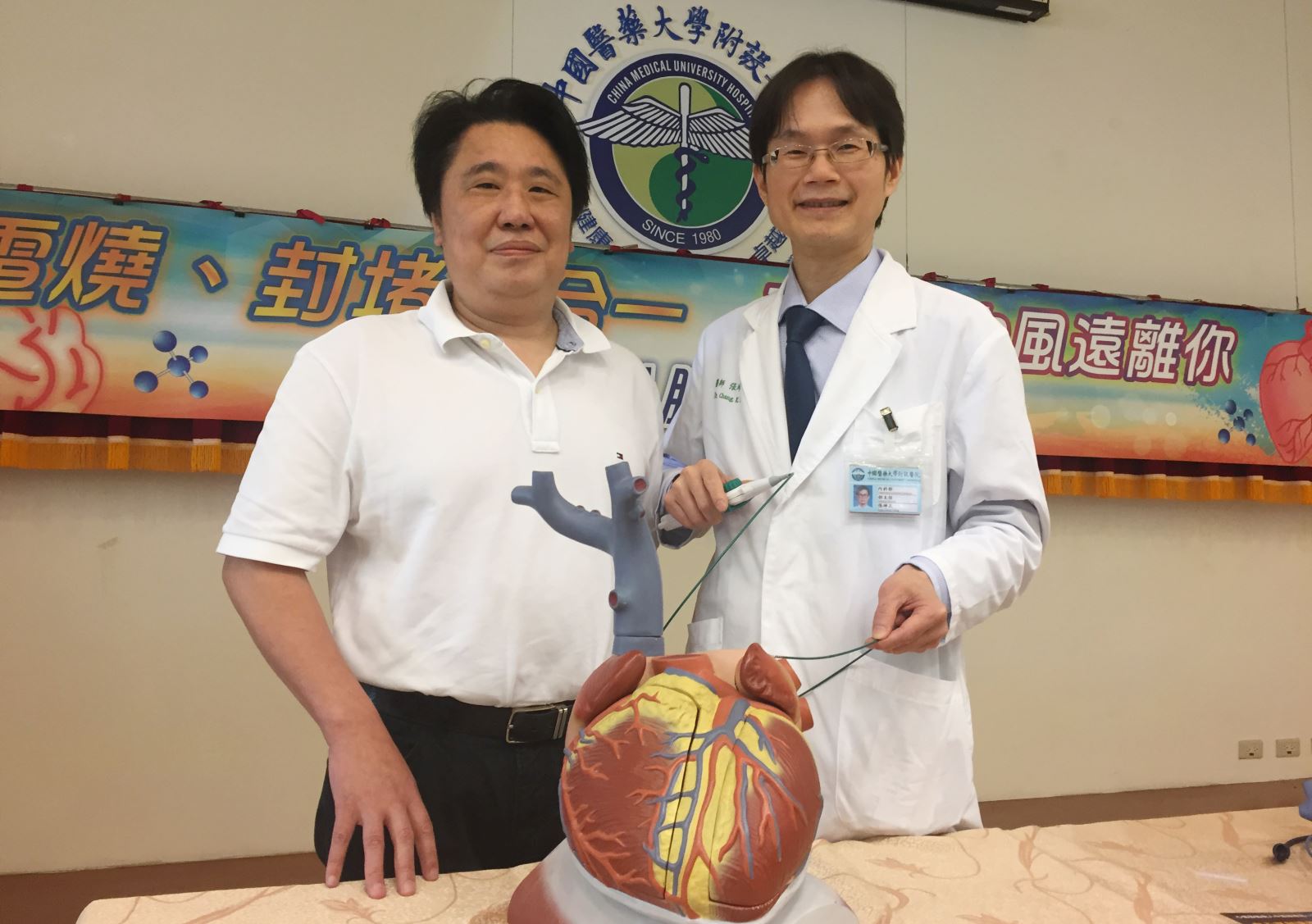News and Award
About CMUH
Combination of the catheter ablation and appendage occlusion. Atrial fibrillation and stork will be away from you

A 49-year-old Mr. Ni in Taichung City had suffered from diabetes, hypertension, and paroxysmal atrial fibrillation. Although he was routinely treated and took traditional anticoagulants; however, before the Chinese New Year in the year before last year, he suddenly occurred the right-side limb weakness, inability to speak, and was urgently sent to the China Medical University Hospital. After the thrombectomy in the left middle cerebral artery, language and limb functions recovered and discharged on week later. To avoid the recurrence of the stroke, Mr. Ni changed to take the novel anticoagulant (NOAC) with better effect for stroke prevention, but unfortunately, he had severe skin allergies to the four NOAC on the market. After discussing the dilemma with Director Kuan-Cheng Chang, Department of Cardiology, China Medical University Hospital, Mr. Ni decided to undergo a one-time operation with combination of atrial fibrillation catheter ablation and atrial appendage occlusion.
With the maturity of 3D stereotactic technology in recent years, atrial fibrillation catheter ablation has become an indispensable tool for treating the atrial fibrillation. Evidence-based medicine has pointed out that the atrial fibrillation catheter ablation is significantly effective on control rate, mortality, heart failure, and re-hospitalization rate of atrial fibrillation than the drug administration. Meanwhile, the left atrial appendage occlusion also developed into a mature stage, its prevention efficacy of stroke is not only superior to the traditional oral anticoagulants, the safety of surgery is also significantly improved.

The combination of atrial fibrillation catheter ablation and atrial appendage occlusion reduces the high-risk of stroke and bleeding
Most patients receiving atrial fibrillation catheter ablation are not at the initiation stage of the atrial fibrillation; therefore, the atria have certain lesions upon performing the catheter ablation surgery. Additionally, according to statistics, the control rate of atrial fibrillation is about 70% after a single surgery, and the recurrence rate is about 30%. Patients have to continuously use anticoagulant drugs to prevent stroke. However, some patients cannot take the novel and traditional anticoagulants for a long time due to the congenital genetic factors or acquired comorbid factors and which results in risking between stroke and bleeding. The role of the left atrial appendage occlusion is to treat this type of patients, because more than 90% of emboli caused by atrial fibrillation occur in the left atrial appendage. When the epithelium of the left atrial appendage occluder is fully regenerated, patients can be protected against stroke without long-term dependence on anticoagulant drugs. Therefore, simultaneous atrial fibrillation catheter ablation and left atrial appendage occlusion allow symptoms and prognosis improving, achieve the effect of preventing stroke, and patients at high risk of both infarct and bleeding have most benefits from it.
Team cooperation of performing catheter ablation and appendage occlusion allows patients escaping from the long-term anticoagulants intake
Under the leadership of catheter ablation and appendage occlusion team by Director Kuan-Cheng Chang and Ping-Han Lo, Department of Cardiology, China Medical University Hospital, Mr. Ni finally successfully completed the catheter ablation and appendage occlusion. The 45-day esophageal ultrasound result showed that the occlude was in good condition and there was no recurrence of atrial fibrillation during the follow-up duration. Now Mr. Ni did not take anticoagulant, his heart condition is good, and has regular follow-up at outpatient department.
Kuan-Cheng Chang, Director,
Department of Internal Medicine/Cardiovascular Medicine,
China Medical University Hospital



